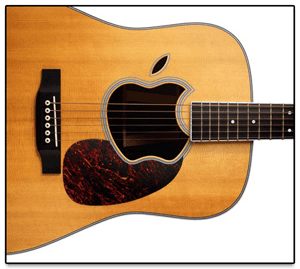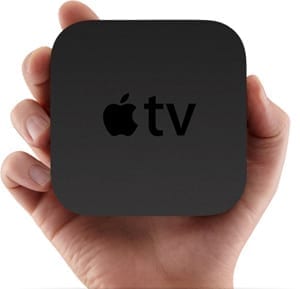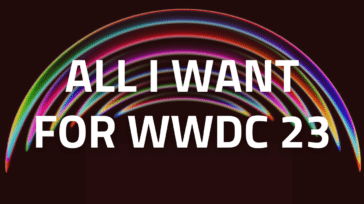 Much has been said in about Apple’s new App Store Subscription policy which essentially says that apps can no longer link to external web sites to buy content or subscriptions. All subscriptions/content must be able to be purchased in the app, with developers and publishers required to offer in app prices that are the same or better than deals available outside the app… like on content providers’ web sites, for example.
Much has been said in about Apple’s new App Store Subscription policy which essentially says that apps can no longer link to external web sites to buy content or subscriptions. All subscriptions/content must be able to be purchased in the app, with developers and publishers required to offer in app prices that are the same or better than deals available outside the app… like on content providers’ web sites, for example.
Content publishers are crying foul, and most everyone seems to agree. Terms like “big brother” and “1984” are being bandied about with fervent anger.
But the issue is: they’re all wrong and Apple is actually right on this one.
Apple is in the business of making money, and is looking to make the App store and app experience a cohesive experience.
Of course, since the newspapers and magazines have long wanted to provide subscriptions—and they can swing the news a bit—they’re crowing about how unfair this is in their respective media outlets.
Let’s not pretend that magazines and newspapers aren’t trying to cash in both ways on the App Store. They want to get into the marketplace and have Apple handle: app hosting, app delivery, showcase to millions of eyeballs, and most likely new customers, and not pay a dime for it aside from the $100 a year developer price.
Apple is targeting a unified experience wherein users don’t have to login into a different web site for every different app, with different login credentials for each service to subscribe or purchase content. That’s a big fragmented market mess that even I don’t want to be part of.
Apple is also saying if—and that’s a big “if”—the customer subscribes via the app, Apple gets their cut. They’re not saying users can only subscribe via the app, but that the app must also have a subscription or in app purchase method from the content provider that doesn’t gouge the App Store users; it has to be at the standard price.
Content Providers Can’t See the Forest Through The Trees
Let’s also not pretend that prices of magazines and newspapers drive revenue. The prices for mags and papers are there largely to pay for the logistics of printing and delivering the product, if they even pay for that. The money from both those types of industries comes from advertising and subscriber list selling.
If they don’t have to pay for printing and delivery of physical media why are they trying to charge for the app? In many cases, these content providers are charging the full newsstand price to boot! Delivery is free, Apple provides that. So why charge for the app? They’re focusing on the short money versus the long term revenue gained by advertising to a large audience. For magazines, it’s cheaper to tear out a subscription card and get year’s worth of magazines than it is to buy 2-3 digital editions of the same magazine. Build the audience, and you’ll build advertising. Don’t require the reader to pay for delivery when there’s virtually no cost.
Apple doesn’t share a list of people who bought the app with the app creator, and they shouldn’t. If magazines and papers want that info they could always offer a sweepstakes or prize or something to get users to sign up. Imagine that… a little marketing idea to solve that issue.
Newspaper and Magazine App Quality
The newspapers, overall, get it as far as apps go. They’re generally light, and the better apps pull up content quickly with an easy-to-understand interface.
Magazine apps, on the other hand, have been an absolute joke. It essentially looks like the print designers are trying to learn the lessons web designers learned in the ’90s: that you simply cannot have a full resolution copy digitally without the file size being bloated, and most magazine apps suffer from extreme file size bloat. There’s absolutely no reason a magazine app download should be CD-ROM sized at 500MB+. That’s a joke. A 16GB iPad could only hold 30 magazines at that rate. Puh-leaze.
Magazines need to realize their web site is closer to what an app should be like content wise versus their printed magazine. Their app doesn’t need interactive 3D photos, and the like. Readers want to read the great content that’s offered in the magazine pure and simple. Ditch the gimmicks, and make a high quality, efficiently sized product for once.
Kindle and Sony e-Reader
This is where it gets a little dodgy. Books don’t have the advertising revenue like mags and papers so the pricing models need to provide profit. Again, Apple’s not saying the user only has to buy from within the app, they’re saying that the purchasing ability has to “also” be available within the app. In truth though, in app purchasing is a much better experience and is definitely the path of least resistance when it comes to books.
I’ve been a huge Kindle fan since the Kindle app first came out on the original iPhone. I never liked having to setup an account on Amazon and come back to the app but, aside from that oddity, overall the Kindle app is one great app!
I have a few books purchased through Kindle, but I’ve mainly switched over to iBooks as the integrated experience it provides is much better. Both apps have a similar reading experience / quality, but I would have to give the edge to iBooks with bookmarking, highlighting, pdf reading, and other features.
Kindle has a much bigger library of books to choose from, but I feel my purchases are more protected over the long-term via Apple’s iBooks versus Amazon’s Kindle. With iBooks, when I buy a book, it’s downloaded like an app. I can keep it and load it on other iDevices my family owns, and read without an internet connection. For Kindle I need to log in and the books are essentially streamed as I read. If the network is unavailable I can only read the pages that have been streamed thus far; if the service ever goes away, my books are lost. Essentially, with Kindle I feel I’m paying to stream books instead of owning them like with iBooks… and with similar book pricing… I’m betting my money that iBooks is going to be around a long time.
With the iBooks app, both the Kindle and Sony e-Reader apps are now direct Apple competitors, and that’s a hard place to be. Apple could’ve simply said the apps provide functionality that already exists and dismiss the Kindle and Sony apps for it’s own nefarious ends, but Apple didn’t take that bullying maneuver (which if they did I would then agree with a “big brother” label).
Though I can see how it could be hard or impossible for Kindle or Sony to be able to honor Apple’s in app purchase without the need to raise prices on their book library overall. The book publishing industry has a wonky “old world” remuneration and point of entry methodology I won’t get into here. The industry knows what it needs to do, and publishers can either change with the industry or some will go extinct. Somebody else will fill in any gaps in book publishing left behind if any of the old players can’t adapt.
You won’t exactly see Apple’s iBooks app on a Kindle device, so the message that Apple is evil while others aren’t is a bit dubious to me.
Netflix
It’s a great app. I’m certain Netflix doesn’t want to have to pay Apple 30% for those who subscribe via the Netflix App in the App Store. But, overall, I would say that’s a low cost for customer acquisition. It’s Netflix’s choice to decide if they want keep their app available, but I doubt they would want to leave that marketplace behind. Time will tell.
June 30
All app creators have until June 30th, 2011 to comply with the new rules. So that will be the day we’ll find out who chose to stay.
In the end the App Store is a mega-hit. It’s generally the best app store experience that everyone wants a piece of due to one simple reason… there’s millions of paying customers in that unified marketplace.
In Closing…
Apple is smartly trying to make the App Store user experience better for the long haul to support subscriptions and in app purchasing, while also saying that if they bring customers to a particular company, that particular company can’t circumvent the in app purchasing capability.
Content providers need to wake up. There’s a huge opportunity if they would just embrace it and implement it right. For book publishers and other media providers, it’s the cost of doing business; do you want in or out?










IMO every thing on world wide web should be free, I mean unlike “free beer” but like open source free
I agree. It’s Apple’s train set, so if others want to play with it, they have to play by Apple’s rules.
I did say I’m “betting” that iBooks will be around a long time. I don’t totally agree with the assessment that Apple dumped PowerPCs and old iPods. We sell many memory upgrades, drives, and accessories for the PowerPC line of Macs. Apparently many a Mac user out there feels those are still powerful machines, and they indeed are.
OWC also introduced an OWC SSD line for those those IDE/ATA based Macs too! See the full line at:
http://eshop.macsales.com/shop/SSD/OWC/
As far as iPods are concerned you may not be able to find a case from Apple for the first gen iPods, but you can still plug each and every iPod into iTunes, sync music to it, and listen away. That’s not exactly dumping the product.
The longevity of iBooks will depend on not only on the library of media offered, but also how much it integrates into our lives. Like the iPod did, the iPad is transformational when it comes to delivering, reading, and storing literature with iBooks. This especially rings true in the educational system, which I can guarantee that if the iPad and iBooks is embraced by the educational system, that iBooks will be around for a very long time.
You can hear more about the topic of the iPad in education in the OWC Radio Podcast #52:
http://blog.macsales.com/8846-owc-radio-52-education-publication-vibration
Content Prevention:
I’m not quite sure how Apple is preventing you from using self owned content that can run on other devices. Netflix runs on all, and Kindle runs on all, but you don’t “own” that content. However, if those content providers decide to opt out due to the need to offer Apple a cut of subscriptions Apple brings to them via iTunes, whose exactly cutting the cord? Netflix and Amazon spend millions in advertising and other efforts to acquire new customers. If Apple serves them customers on a silver platter, shouldn’t they get a cut?
The free market is what made iOS. Everyone’s been coming out with “supposed” iPod and iPad killers. But it is a free market…. nobody is forced to use iOS nor iDevices. Apple just happens to be the best at what they do right now.
If Apple oversteps and the courts are needed to fix an injustice than so be it, but brick and mortar retail outlets charge for ideal aisle and shelf prominence so product manufacturers can get more eyes and purchases for their products. Would you litigate against that?
To me it doesn’t matter if Apple wants to charge for subscriptions, my point is that magazine’s shouldn’t be charging for them in the first place. Free subscriptions solve both issues.
iBooks will be around for a long time? Apple has a notorious history of putting old devices onto end-of-life – think of PowerPC Macs. Try to get a case for an older iPod. Good luck with that.
I can fully understand that Apple wants to prevent developers from trying to cutoff Apple’s revenue stream by developing work-arounds to Apple’s marketplace of iOS apps and in-app purchases. What is galling is that Apple wants to prevent you from using your content that you can run on other devices from running on iOS. This is the problem with the Kindle, Netflix and virtually every other external subscription system.
I wish the free market would fix this with a real competitor to the iOS products, but I think that Apple will eventually wind up in a lawsuit (best case scenario) or government regulation (worst case scenario).
One of my key points is that magazine publishers shouldn’t be changing anything for their app. If they didn’t, there would be no issue with Apple’s percentage.
This post sums up my thoughts too. The only thing I think Apple should consider is a different fee tier for subscriptions. I think publishers would probably be complaining much less if Apple’s cut was a more reasonable 10%-15%, rather than the full 30% that Apple takes from standalone apps.
Wow, very nice post on this issue. Thank you for sharing your thoughts on this.